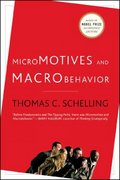Question
1. A firm is charging a different price for each unit purchased by a consumer. This is called: Select one: a. fourth-degree price discrimination. b.
1. A firm is charging a different price for each unit purchased by a consumer. This is called:
Select one:
a. fourth-degree price discrimination.
b. third-degree price discrimination.
c. fifth-degree price discrimination.
d. first-degree price discrimination.
e. second-degree price discrimination.
2. An amusement park charges an entrance fee of $75 per person plus $2.50 per ride. This is an example of:
Select one:
a. a two-part tariff.
b. tying.
c. second-degree price discrimination.
d. bundling.
e. first-degree price discrimination.
3. An electric power company uses block pricing for electricity sales. Block pricing is an example of:
Select one:
a. first-degree price discrimination.
b. second-degree price discrimination.
c. Block pricing is not a type of price discrimination.
d. third-degree price discrimination.
4. For a two-part tariff imposed on a consumer, the entry fee is based on the:
Select one:
a. simple average of the consumer surplus for all buyers.
b. producer surplus.
c. none of the above
d. consumer surplus.
5. MNO Limited publishes a magazine targeted at urban professionals who live on the east and west coasts of the U.S., and all of the magazines are printed at a marginal cost of $0.50 per copy at a publishing plant in Kansas. If the East Coast elasticity of demand for the magazine is -1.25 and the West Coast elasticity of demand is -1.50, what prices should MNO Limited charge for the magazines in these two markets in order to maximize profits?
Select one:
a. Price should be $1.50 on the West Coast and $2.50 on the East Coast.
b. Price should be $1.50 on the West Coast and $1.50 on the East Coast.
c. Price should be $0.40 on the West Coast and $0.33 on the East Coast.
d. Price should be $0.50 in both markets.
6. Under perfect price discrimination, consumer surplus:
Select one:
a. is less than zero.
b. is greater than zero.
c. is maximized.
d. equals zero.
7. When a monopolist engages in perfect price discrimination,
Select one:
a. marginal cost becomes zero.
b. the marginal revenue curve lies below the demand curve.
c. the marginal revenue curve becomes horizontal.
d. the demand curve and the marginal revenue curve are identical.
8. Which of the following is NOT a condition for third degree price discrimination?
Select one:
a. different price elasticities of demand in the different markets
b. there needs to be economies of scale
c. the firm has to identify separate markets
d. the firm has to have monopoly power
9. A firm that has a constant marginal cost has adopted a two part tariff pricing scheme. This implies that
Select one:
a. all profits originate from the user fee.
b. there are no profits.
c. there are no profits originating from the user fee, profits are equal to the access fee.
d. all profits originate from the user fee and the access fee combined.
10.. is in the picture attached

Step by Step Solution
There are 3 Steps involved in it
Step: 1

Get Instant Access to Expert-Tailored Solutions
See step-by-step solutions with expert insights and AI powered tools for academic success
Step: 2

Step: 3

Ace Your Homework with AI
Get the answers you need in no time with our AI-driven, step-by-step assistance
Get Started


